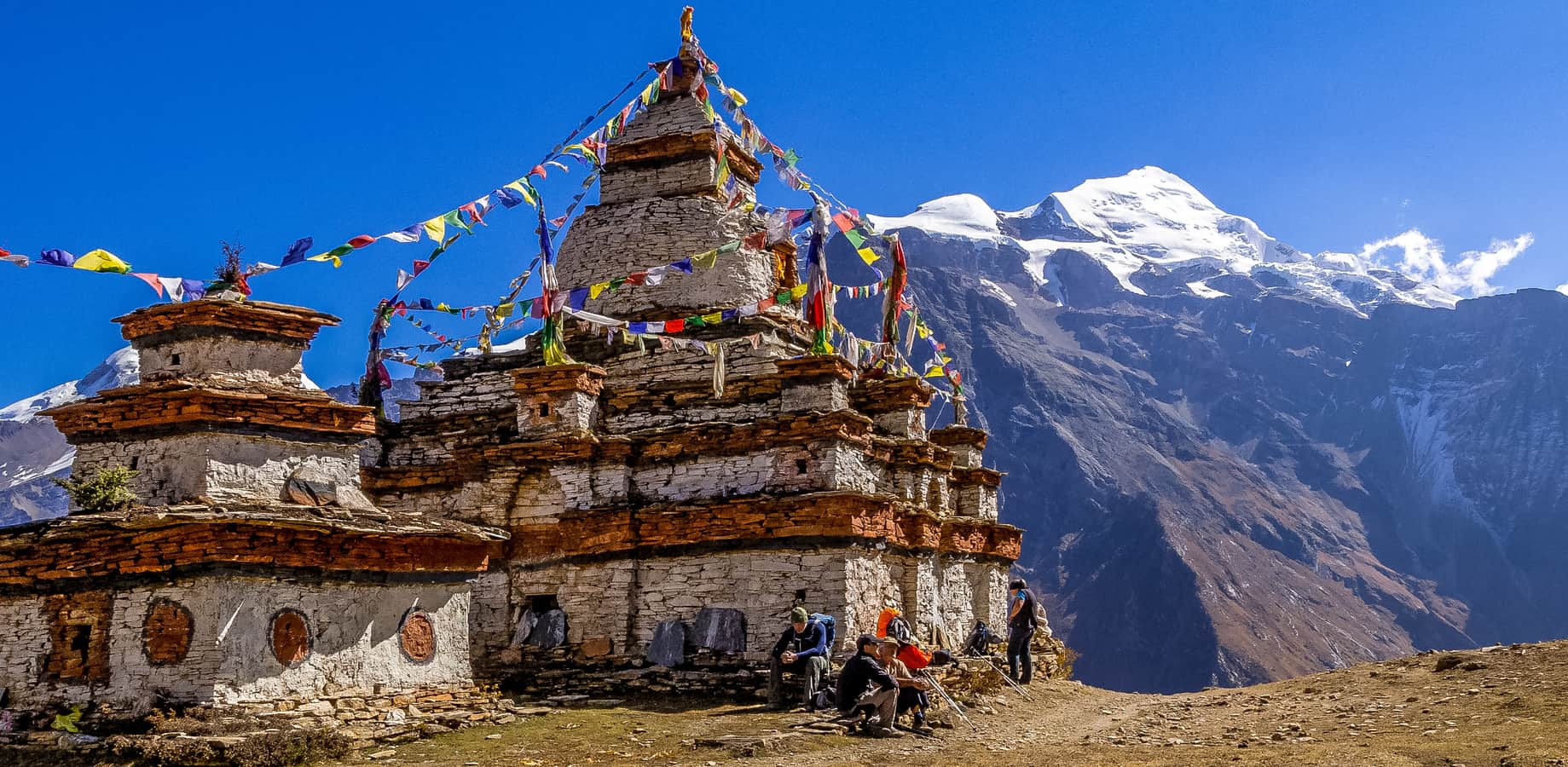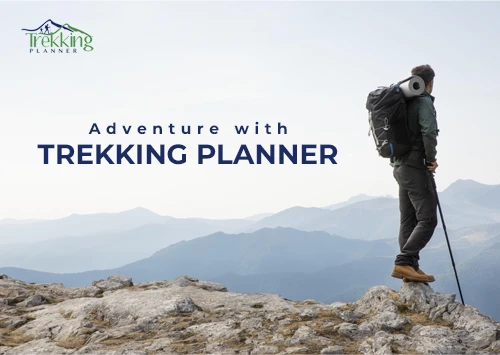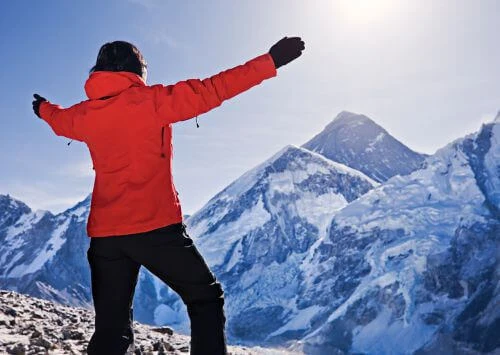Nepal Travel Guide: When to Visit and What to Expect.
Wondering when to plan your Nepal for Adventure? This travel guide covers the best time to visit and what you can expect during your stay.
Nepal is a beautiful country with a rich culture and stunning natural landscapes. However, the best time to visit Nepal depends on what you want to do and see during your trip. From trekking in the Himalayas to exploring Ancient culture and temples, this travel guide will help you plan your adventure in Nepal.
Best time to visit Nepal.
Best time to visit Nepal depends on what you want to do and see during your trip.  The peak tourist season is from September to November, when the weather is clear and dry, making it perfect for trekking in the Himalayas. The spring season, from March to May, is also a great time to visit as the weather is mild and the flowers are in bloom. However, if you want to avoid the crowds and get cheaper prices, consider visiting during the monsoon season, from June to August. Keep in mind that some areas may be inaccessible during this time due to landslides and flooding.
The peak tourist season is from September to November, when the weather is clear and dry, making it perfect for trekking in the Himalayas. The spring season, from March to May, is also a great time to visit as the weather is mild and the flowers are in bloom. However, if you want to avoid the crowds and get cheaper prices, consider visiting during the monsoon season, from June to August. Keep in mind that some areas may be inaccessible during this time due to landslides and flooding.
The best time to visit Nepal depends on what you want to do and see while you're there. Generally speaking, the best time to visit Nepal is during the autumn months of September to November or the spring months of March to May, when the weather is mild and dry. Here's a breakdown of what to expect during each season:
Autumn (September to November):
This is the peak tourist season in Nepal, as the weather is clear and dry, and the skies are usually clear of clouds, providing excellent views of the mountains. This is also the time when major festivals like Dashain and Tihar take place, offering visitors a chance to experience of Nepali Culture and traditions.
- You will see crystal-clear skies and incredible mountain views.
- The weather is dry and stable, with mild days and crisp nights. It is perfect for trekking and outdoor adventures.
- This season also brings Nepal’s biggest festivals: Dashain and Tihar, adding a colorful, cultural layer to your trip.
- With so many people choosing to travel during these months, you’ll find busy trails, full tea houses, and higher demand for guides and porters.
Winter (December to February):
Winter in Nepal can be cold, especially in the higher elevations, but it's still a good time to visit if you're interested in trekking. The skies are usually clear, and the trails are less crowded than in the peak season.
- The Himalayan region sees sub-zero temperatures, especially at night, but the lower elevations like Kathmandu, Pokhara, and Chitwan remain comfortable, with daytime temps between 8°C and 20°C.
- Cultural and heritage tours thrive in winter. Sites like Bhaktapur Durbar Square, Lumbini, and Bandipur are less crowded and easy to explore.
- Low-altitude treks like Ghorepani Poon Hill, Chisapani–Nagarkot, and Kathmandu Valley Rim are ideal options during this season.
- You’ll also enjoy crisp skies and beautiful sunrises, especially in hill stations like Sarangkot and Nagarkot.
Spring (March to May):
This is another popular time to visit Nepal, as the weather is mild and dry, and the forests and hillsides are in full bloom with rhododendrons and other wildflowers. This is also a good time to trek in the mountains, as the snow begins to melt and the trails are not as muddy as during the monsoon season.
- The weather is generally mild and stable. In the daytime, temperatures range from 15°C to 25°C in lower regions. This time is best for both trekking and exploring different places in Nepal.
- The skies are mostly clear. You will see stunning views of snow-capped peaks like Everest, Annapurna, and Machhapuchhre.
- In this season, you will experience the hills and forests come alive with vibrant rhododendron blooms, Nepal’s national flower. It creates colorful landscapes that feel like something out of a painting.
- Major trekking routes like Everest Base Camp, Annapurna Circuit, and Langtang Valley are in full swing, so expect lively trails and bustling tea houses.
Summer/Monsoon (June to August):
This is the least popular time to visit Nepal, as the weather is hot and humid, and the monsoon rains can make trekking and other outdoor activities difficult. However, this is a good time to visit if you're interested in seeing Nepal's lush green landscapes, and the prices for accommodation and flights are usually lower than in the peak season.
- Expect daily rain showers, mostly in the afternoon or evening. The mornings often start clear but become humid quickly.
- Trails can be muddy, leeches are common in forested areas, and landslides may disrupt road travel or remote treks.
- However, the countryside turns a lush, deep green and the valleys and rice terraces look absolutely stunning.
- There are far fewer tourists, which means quieter trails, cheaper accommodations, and more local interaction.
Summary Table
Season | Months | Weather | Best For | Things to Note |
Spring | March – May | Warm days, clear skies, occasional rain | Trekking, mountain views, nature photography | Hills are filled with blooming rhododendrons. Popular trekking routes can get busy. |
Monsoon (Summer) | June – August | Hot, humid, heavy rain, especially in the evenings | Lush landscapes, fewer crowds, budget travel | Landslides can affect road/trek conditions. Mountain views are often hidden by clouds. |
Autumn | September –November | Clear skies, pleasant temperatures, dry air | Trekking, cultural festivals, mountain views | Most popular trekking season — book early for flights and lodges. |
Winter | December – February | Cold in the mountains, mild in the lowlands | Cultural tours, low-altitude hikes, and city sightseeing | Snowfall may close high passes. Great time for fewer crowds and sunny days in the cities. |
Weather and climate in Nepal.
Nepal has a varied climate due to its diverse topography, ranging from tropical in the lowlands to alpine in the high Himalayas.
Popular Tourist destinations in Nepal.
Nepal is a country rich in culture and natural beauty, with many popular tourist destinations to explore. One of the most famous is the city of Kathmandu, known for its ancient temples and bustling markets. Other popular destinations include Pokhara, a lakeside city with stunning mountain views, and Chitwan National Park, where visitors can go on safari to see rhinos, tigers, and other wildlife. For those looking for adventure, trekking in the Himalayas is a must-do activity, with popular routes including the Everest Base Camp Trekand the Annapurna Circuit Trek.
Some popular destinations are:
Nepal is a beautiful country with a rich cultural heritage and stunning natural beauty. Here are some of the popular tourist destinations in Nepal:
Kathmandu: The capital city of Nepal is a bustling metropolis filled with ancient temples, culture, colorful markets, and vibrant street life.
Pokhara: Known as the "Gateway to the Himalayas", Pokhara is a scenic lakeside town that offers stunning views of the Annapurna range.
Chitwan National Park: This UNESCO World Heritage Site is home to a diverse range of wildlife, including tigers, rhinos, and elephants.
Everest Base Camp: For those looking for a challenging trek, Everest Region offers stunning views of the world's highest peak.
Bhaktapur: This ancient city is home to numerous temples, palaces, and courtyards and is known for its exquisite pottery and woodcarving.
Lumbini: As the birthplace of the Lord Buddha, Lumbini is an important pilgrimage site for Buddhists and a must-visit for anyone interested in Buddhist history and culture.
Annapurna Region: This popular trek offers stunning mountain views and the opportunity to experience traditional Himalayan culture.
Langtang National Park: Located near Kathmandu, Langtang National Park offers beautiful trekking opportunities through dense forests and picturesque villages.
Patan: Known for its impressive architecture and traditional Newari culture, Patan is a great place to explore on foot.
Bouddhanath Stupa: This giant stupa is one of the most important Buddhist sites in Nepal and a must-visit for anyone interested in Buddhist culture.
Cultural and adventure activities in Nepal.
Nepal offers a wide range of cultural and adventure activities for visitors to enjoy. In addition to exploring ancient temples and bustling markets in cities like Kathmandu, visitors can also go on safari in Chitwan National Park to see rhinos, tigers, and other wildlife. For those looking for adventure, trekking in the Himalayas is a must-do activity, with popular routes including the Everest Base Camp Trek and the Annapurna Circuit Trek. Other popular activities include white-water rafting, paragliding, and bungee jumping. With so much to see and do, Nepal is a great destination for travelers looking for a mix of culture and adventure.
Cultural Activities.
Visit UNESCO World Heritage Sites: Nepal has 10 UNESCO World Heritage Sites, including Kathmandu Durbar Square, Pashupatinath Temple, and Bouddhanath Stupa.
Explore local markets: Visit the colorful local markets in cities like Kathmandu and Pokhara to experience the vibrant culture and shop for traditional handicrafts and souvenirs.
Attend a traditional festival: Nepal has a rich calendar of traditional festivals throughout the year, including the colorful Holi festival and the Bisket Jatra festival.
Try traditional cuisine: Nepalese cuisine is a delicious mix of Indian and Tibetan influences, with dishes like momos, dal-bhat, and chowmein.
Visit museums: Nepal has several museums that showcase the country's history and culture, including the National Museum in Kathmandu and the Museum of Natural History in Pokhara.
Adventure Activities.
Trekking: Nepal is famous for its trekking routes, including the popular Everest Region, Annapurna Region, Langtang Region and many unexplored trekking routes.
Rafting: Nepal has several rivers that offer excellent whitewater rafting adventures, including the Trishuli River and the Sun Koshi River.
Bungee jumping: Nepal has one of the world's highest bungee jumps, located near the border with China.
Paragliding: Paragliding is a popular adventure activity in Pokhara, offering stunning views of the Himalayas and the Phewa Lake.
Mountain biking: Nepal has several mountain biking routes, around the Kathmandu Valley Rim Trail and other major cities of Nepal.
Wildlife safaris: Chitwan National Park and Bardiya National Park are home to a diverse range of wildlife, including royal Bengal tigers, one-horned rhinos, and elephants, and offer the opportunity for wildlife safaris.
Tips for a safe and enjoyable trip to Nepal.
Nepal is a beautiful and exciting destination, but it’s important to take precautions to ensure a safe and enjoyable trip. Some tips to keep in mind include staying hydrated, dressing appropriately for the weather and cultural norms, being aware of your surroundings, and avoiding drinking tap water. It’s also a good idea to research any potential health risks and get necessary vaccinations before traveling. Additionally, be respectful of local customs and traditions, and consider hiring a local guide to help navigate the language and culture. With these tips in mind, you can have a memorable and safe trip to Nepal.
Here are some tips for traveling to Nepal:
Get vaccinated: Make sure you are up-to-date on all recommended vaccinations for Nepal, COVID-19 vaccine.
Purchase Travel insurance: Travel insurance can provide peace of mind in case of illness, injury, or other unexpected events.
Be prepared for Altitude Sickness: If you are planning to trek in the Himalayas, it's important to acclimatize slowly to avoid altitude sickness. Make sure to drink plenty of water and take breaks as needed.
Respect local customs and Traditions: Nepalese culture is deeply rooted in tradition and religion. Be respectful of local customs and dress modestly, especially when visiting temples or other religious sites.
Avoid drinking tap water: Stick to bottled water or other safe drinking water sources to avoid water-contaminated health issues.
Be aware of potential scams: Like in any tourist destination, there may be scams or pickpocketing attempts, fraud, or cheating. Be careful of anyone offering unsolicited help or services, and keep a close eye on your belongings.
Use licensed guides and tour operators: When trekking or engaging in adventure activities, make sure to use licensed guides and tour operators who are knowledgeable and experienced.
Stay informed of weather conditions: Nepal's weather can be unpredictable, especially in the mountains. Stay informed of weather conditions and plan accordingly.
Carry proper identification: Carry a copy of your passport and visa with you at all times, and leave a copy with a trusted friend or family member in case of emergency.
Stay connected: Make sure to keep your loved ones informed of your travel plans and stay connected through phone or internet in case of emergency.
Best Time to Book Trekking Holidays in Nepal
Nepal is a haven for trekkers around the globe. Though a year-round traveling destination, some challenging trek routes are only convenient during the season. When the monsoon season ends, Nepal enters its ideal trekking season, offering the perfect conditions to explore its stunning landscapes.
Usually, the rainfall episode in Nepal starts in June and ends in the first week of September. Thus, the dawn of September shows the promise of a great trekking season in Nepal. This peak season for trekking grants you a spectacular view of the Himalayas with a clear sky above you. So, the inbound of trekkers from every corner of the globe is expected to be high. For lesser traffic in the Himalayas, you can trek in Nepal's less-traveled region.
Here are some reasons why now is the best time to book trekking holidays in Nepal.
Of course, the weather!
Although Nepal's weather and climate are unpredictable throughout the year due to its geographical positioning, the four months starting from September are the best time to trek. From September, you don’t need to worry about the weather as the monsoon season will have already come to an end. However, trekkers might experience slight rainfall in September's first and second weeks.
Travel Along.
Some of Nepal's acclaimed trekking routes attract trekkers from around the world. So, you will meet many other fellow trekkers on your way to these acclaimed trekking routes. But if the traffic in the Himalayas annoys you, picking less-traveled trek routes can be an alternative. However, trekking routes like Everest Base Camp and Annapurna Base Camp are some of the high-profile trekking routes in Nepal, sure to have many admirers on the way. But it’s always fascinating to listen to other travellers' stories while sipping hot tea in the Himalayas.

The Festivals.
Nepal is a multicultural country with unity in diversity. Although Nepal celebrates festivals year-round, the biggest is the festival of Dashain and Tihar. If you are planning to trek in Nepal during October and November, then your trek might coincide with the grand festival of Dashain and Tihar during your visit. The festival of Dashain lasts for ten days, and Tihar lasts for three days.
Spectacular Views.
This is when the monsoon clouds do not bother the routes anymore. The sun will be high and shining with a clear sky, and trekkers will see the scenic beauty of Nepal in no better way than this time. Slight snow may fall during this season, which makes the season even more dazzling.
These are just a few reasons why many consider September, October, November, and December the best months to trek in Nepal.





